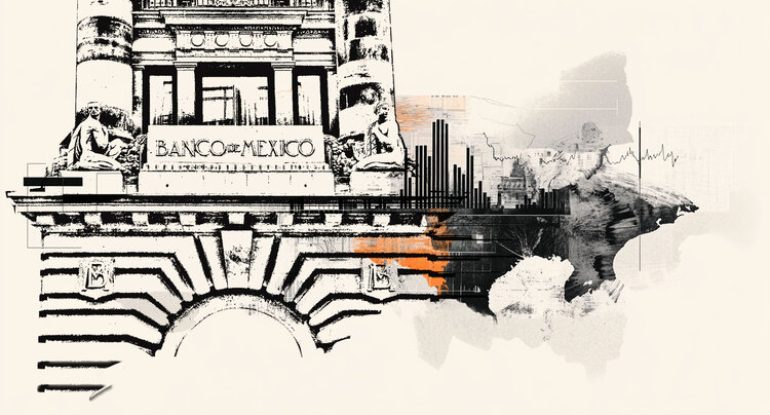Rates Cut: Banxico Expected to 9%

A recent Reuters poll suggests that Banco de Mexico (Banxico), the country’s central bank, is widely expected to lower interest rates by 0.50 percentage points (or 50 basis points) on March 27th. This anticipation comes as inflation in Mexico continues to ease and the economy experiences a slowdown.
Economists Foresee Interest Rates Dropping to 8.25% by 2025
Looking at the predictions from 25 economists surveyed, a strong majority – 23 of them – believe Banxico will indeed reduce borrowing costs by 50 basis points. This would bring the key interest rate down from 9.50% to 9.00%. The remaining two economists, however, predict that the Mexican central bank will choose to hold rates steady.
If it happens, this would mark the second consecutive rate cut of this magnitude. Back in February, during their previous meeting, the Governing Council decided to cut the main interest rate from 10.00% to 9.50%. This decision wasn’t unanimous, though – it passed with a 4-1 vote, as Deputy Governor Jonathan Heath preferred a smaller rate reduction of 25 basis points and voted against the larger cut.
While Banxico’s primary goal is to keep inflation under control, the recent cooling of the Mexican economy has led the central bank to consider a looser monetary policy. Policymakers have explained this shift by pointing out that as economic activity slows down, inflationary pressures tend to lessen as well.
Looking ahead, next week is shaping up to be a busy one for Mexican economic data releases. Market watchers will be paying close attention to the latest figures on mid-March inflation, retail sales, and the trade balance.
Banxico FAQs
What exactly is Banxico? It’s simply the Bank of Mexico, the nation’s central bank. Its core mission is to protect the value of the Mexican Peso (MXN) and manage the country’s monetary policy. To achieve this, Banxico’s main aim is to maintain inflation at low and stable levels, ideally around their target of 3%, which is the midpoint of their acceptable range of 2% to 4%.
How does Banxico control monetary policy? Their primary tool is setting interest rates. If inflation climbs too high, Banxico tries to curb it by raising interest rates. This makes borrowing more expensive for both households and businesses, which in turn helps to slow down the economy and reduce inflationary pressure. Generally, higher interest rates are seen positively for the Mexican Peso (MXN) because they offer investors higher returns, making Mexico a more attractive investment destination. Conversely, lower interest rates tend to weaken the MXN. The difference in interest rates compared to the US, particularly how Banxico’s rate decisions compare to those of the US Federal Reserve (Fed), is a critical factor influencing the Peso.
How often does Banxico meet and how are their decisions made? Banxico holds eight monetary policy meetings throughout the year. Their decisions are heavily influenced by the actions of the US Federal Reserve (Fed). Typically, Banxico’s decision-making committee convenes about a week after the Fed’s meetings. This allows Banxico to react to, and sometimes even anticipate, the monetary policy moves of the Federal Reserve. For instance, after the Covid-19 pandemic began, Banxico actually raised interest rates before the Fed did. This proactive step was taken to lessen the risk of a significant drop in the value of the Mexican Peso (MXN) and to prevent capital from flowing out of the country, which could destabilize the Mexican economy.










